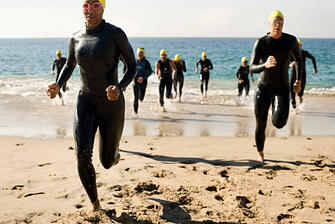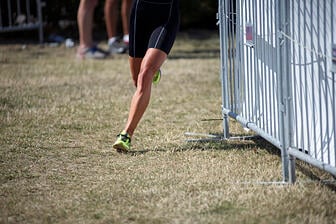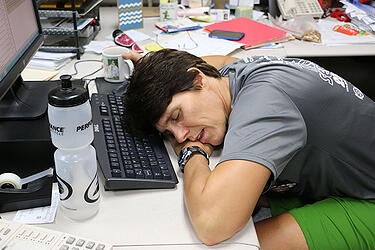 Are you having one of those days (or weeks, or months) where you feel like the gerbil on the wheel? You are going along just fine, and then a stressful situation crops up and you to need to spin the wheel faster. Soon, that’s not fast enough. When you finally realize you are going to be thrown off the wheel if you stop, it hits you: you’re exhausted. I get this way every few months.
Are you having one of those days (or weeks, or months) where you feel like the gerbil on the wheel? You are going along just fine, and then a stressful situation crops up and you to need to spin the wheel faster. Soon, that’s not fast enough. When you finally realize you are going to be thrown off the wheel if you stop, it hits you: you’re exhausted. I get this way every few months.
It doesn’t take much, as you look back, to see how all the mess got started. But we are here for solutions, so let’s find a plan to get us out of the wheel safely.
Take a Break or Try Relaxation Techniques
A weeks’ vacation would be great at this time, but most of us cannot just get up and go. What we can do is plan a short vacation or “staycation” for a long weekend or one day of the week. For me, it helps if I can involve my family, as we seem to be together less and less during these stressful times.
If a vacation week, weekend, or day off is not possible, you need to find time each day for meditation, reflection, and relaxation. Now, I am not about legs crossed and chants, but finding a quiet time and place where you can just STOP is a good place to begin your unwinding.
Deep breathing will help you get to a calmer place. I am not setting a time limit on this, so do as much as you can. Sit quietly and listen to your breath: good, long inhales and longer exhales. Fill your lungs and diaphragm, feeling your belly rise and fall with the breath. Do not think of anything, and try to block out your distractions. Music, it has been said, can calm the savage beast; well, you and I are that beast and we need calm, so that may help.
Here’s another blog about deep-breathing exercises for stress relief.
We cannot determine how stress adds to our weight gain or failure to lose, but it does factor in. If you can find a calm place to take yourself, to get rid of this stress, you will feel better, and thus your body will react better.
Overtraining, Stress and Your Heart Rate
“I’m not overtrained; I’m just not fit.” No, you probably are overtrained and need a break. One good way to tell is to take your heart rate first thing in the morning. (Make sure you don’t have full bladder, or it will raise your heart rate.) When you are rested, recovered, and feeling good, that’s the best time to figure out your rate. If your rate is up three to five beats, you need a break. So if you start now when you know you are stressed, try to take your rate a few days in a row, as you are taking it easy. See whether the morning rate drops.
Usually we don’t need to do the heart rate test very often (one time every two weeks or so), but in the beginning take it for a few days (three to five if possible) to get an idea where you are at.
Overtraining can cause injuries. See what the NIFS experts say about some of these types of injuries here.
A Plan for Resting on “Taper Weeks”
Most runners will tell you that taper week is the toughest week to train. Basically, this week you rest and cut down your running to be ready for race day. There is a great quote about this: “It is better to be over-rested than under-recovered.” Your body is calling (perhaps screaming) for a break, and you are going to have to learn to back down the exercise for a good week and possibly more.
In my mind, two weeks would be crazy, lazy, fattening, and maddening, but this is the bargain I have made with myself (thanks to my training partners for playing along): one week of easy, short workouts; the next will be more challenging and fun. All intense work will be very short, 15 to 20 seconds with long breaks (up to three times as long).
After my hiatus I would like to get on a race training plan or a strength plan and start at it full bore. For now I am going to nap, eat well, go as hard as I can, OR LESS, and enjoy the freedom from any strenuous workouts. If you are feeling the same, I hope you will join me!
This blog was written by Kris Simpson, NIFS Personal Trainer. To find out more about the NIFS bloggers, click here.

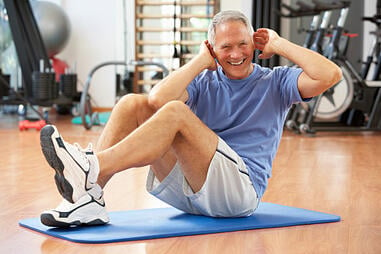 Everyone is demanding you give 100 percent effort on this exercise program or that workout plan. We say (or you hear), “You need to give 110 percent to achieve results. Or even better, “You’re nothing if you don’t give me your all.”
Everyone is demanding you give 100 percent effort on this exercise program or that workout plan. We say (or you hear), “You need to give 110 percent to achieve results. Or even better, “You’re nothing if you don’t give me your all.”
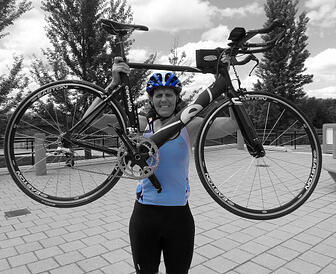 triathlon. When you finished your first race and looked at the breakdown of the times for each event, you probably noticed the T1 and T2 times. T1 is the time it took you to go from swimming to the bike, and T2 is the time it took you to go from the bike to the run. Like the swimming, biking, and running training, the transitions should be trained as well. But don’t think you need to spend hours perfecting getting from one event to the next. A good transition can simply be added to the other brick training sessions.
triathlon. When you finished your first race and looked at the breakdown of the times for each event, you probably noticed the T1 and T2 times. T1 is the time it took you to go from swimming to the bike, and T2 is the time it took you to go from the bike to the run. Like the swimming, biking, and running training, the transitions should be trained as well. But don’t think you need to spend hours perfecting getting from one event to the next. A good transition can simply be added to the other brick training sessions.